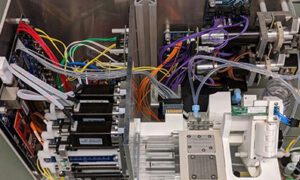Imagine a world where digital mapping transforms telecommunications. This forward-thinking approach optimizes network planning, improves coverage, and assists in speedy 5G rollout. The use of advanced mapping technologies helps telecommunication providers track each network’s performance and swiftly locate faults. Digital mapping is the key to developing smart cities and connects every area by digital networks. It merges with augmented reality, offering an unmatched customer service experience. Digital mapping’s revolutionary promise lies in telecommunications infrastructure development, but its true power unfolds when guiding connectivity advancement, network expansion, and customer service enhancement in the industry.
Increased Network Planning and Optimization
Digital mapping is vital for network planning and optimization. It provides telecommunication companies with important information about regions in need of better service or places targeted for expansion. Detailed digital maps showing existing network structures, possible towers, and even obstacles are offered to planners. This data helps them design networks more effectively. It also helps companies in combining with fiber design software, streamlining the process, and ensuring accurate placement of fiber optic networks for optimal performance. It finds areas with high user activity and guides network adjustments. With the aid of digital mapping, planners can allocate network resources effectively, thus improving service quality. This all leads to faster internet and better coverage. So, digital mapping is a robust tool for any telecommunication provider.
Accelerated 5G Rollout
Digital mapping is speeding the introduction of 5G in the telecoms industry. It begins with determining the best sites for 5G towers based on elements, including population density in a certain area and the kinds of buildings there are. This thus eases the process. Furthermore, it aids telecommunication providers in monitoring their 5G coverage. Lastly, it also highlights areas that require more attention for 5G service deployment. Therefore, through using digital mapping, telecommunication companies can allocate their resources more effectively and roll out the 5G service at a quicker rate. This thus underlines the vital role that digital mapping plays within the telecommunications industry.
Improved Network Performance Tracking
A company’s watch over telecommunications networks can find a great boost with digital mapping. It teams up with network management systems, providing real-time data about the network’s current shape. This clear view lets companies instantly touch base with facts and figures about coverage, capacity, and the overall health of the network. When breakdowns happen, digital mapping races to their aid by spotting network faults in no time. It uses mapped layouts of the infrastructure to show exactly where the problem is. This shortens downtime and speeds up the maintenance process. But it doesn’t stop there. Digital mapping lends a hand in altering networks while also keeping a close eye on any progress made. This promises an optimized service that not only runs smoothly but also stands strong against any issues in the future.
Support for Smart Cities
Digital mapping holds a potent role in crafting smart cities. It offers vital assistance to urban planners, providing insights about current infrastructures and future needs. This info verifies strong connectivity across the town, making it more intelligent and interconnected. Digital mapping is helpful in streamlining the network at telecom companies. It assures harmonious service, from traffic regulation systems to smart energy, spanning all city aspects. Combining it with other tech, digital mapping can reveal the network blueprint and navigate users throughout any city. Thus, digital mapping proves vital in building smart cities and boosting connected networks.
Integration with Augmented Reality
Digital mapping’s future in telecommunications hints at exciting AR combinations. Imagine how digital mapping and AR working together could completely change how everyone sees networks. Companies could easily understand complicated telecom infrastructures with 3D network views. This becomes very useful during network maintenance. AR combined with digital mapping can guide workers through network fixes, thus giving real-time data directly in their field of vision. Second, the customers benefit too. Imagine AR helping users find the nearest telecom tower or 5G coverage area. This clear network visibility helps people, industries, and companies make better decisions. The mix of digital mapping and AR offers numerous possibilities in telecommunications.
Conclusion
Unquestionably, digital mapping will help to shape the direction of telecommunication. It promises to improve areas such as network design and management, speed up the introduction of 5G technology, and help smart city development. The integration of digital mapping with cutting-edge technologies such as augmented reality is set to redefine how networks are supervised and perceived. This leap forward not only elevates user experiences but also triggers continued progression in the field of telecommunications. Digital mapping lights up the path for the industry toward an interconnected future, assisting businesses in perfecting networks, speeding up service implementation, and improving customer support.































